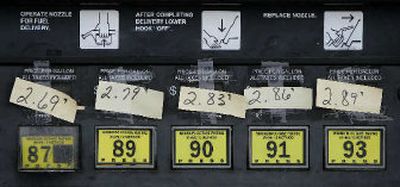Gasoline demand shows weakness

U.S. motorists will spend an estimated $20.5 billion more on gasoline over the next six months than they did the same time last year, the government says, because of higher prices and increased demand. But they’re not happy about the trend, and may just drive less.
“That’s it? That’s it for $20 bucks?” said Laurie Payne of Plano, Texas, as she topped off the tank of her Land Rover with $2.85-a-gallon regular unleaded and swore the day she trades it in is getting closer.
Some analysts say growth in gasoline consumption, which has been below historical norms since the start of the year, could stall out entirely by summer if forecasts of rising pump prices are correct. While this might crimp consumer spending, which accounts for two-thirds of total economic growth, analysts said the impact should be minimal.
“We’re not at gas prices that pose some kind of a tipping point,” said Citigroup Smith Barney senior economist Steven Wieting. He added: “There have been botched forecasts of a recession at every $10 move (higher) in crude oil futures,” which are just above $69 a barrel.
Bolstering that sanguine view, the Energy Department this week released a report predicting gasoline prices would be 25-cents-per-gallon higher from April through September compared with last year, and average demand during the period would climb by 1.5 percent to 9.4 million barrels per day.
However, the nation’s appetite for gasoline is not growing that fast right now, and the possibility of even higher prices in the months ahead has led some analysts to warn of a likely further cooling of demand.
For the first three months of the year, with gasoline futures averaging $1.70 a gallon, gasoline demand rose 0.9 percent compared with the year before, according to Energy Department data. In the first quarter of 2005, with gasoline futures averaging $1.37 a gallon, demand climbed by 1.4 percent compared with the prior year.
Demand for all refined products, which includes gasoline but also jet fuel, residual fuel and distillates such as diesel and heating oil, fell 0.8 percent during the first quarter, compared with a rise of 1.2 percent a year earlier. And globally, demand for oil grew by less than 1 percent in the first quarter, compared with a 2.3 percent jump the year before, the International Energy Agency said this week.
Now, gasoline futures are trading near $2.10 a gallon, and nationwide retail prices are averaging $2.74 a gallon, an increase of 37 cents from a month ago.